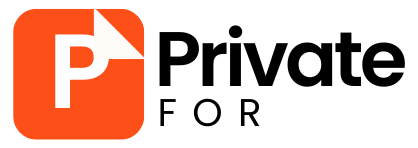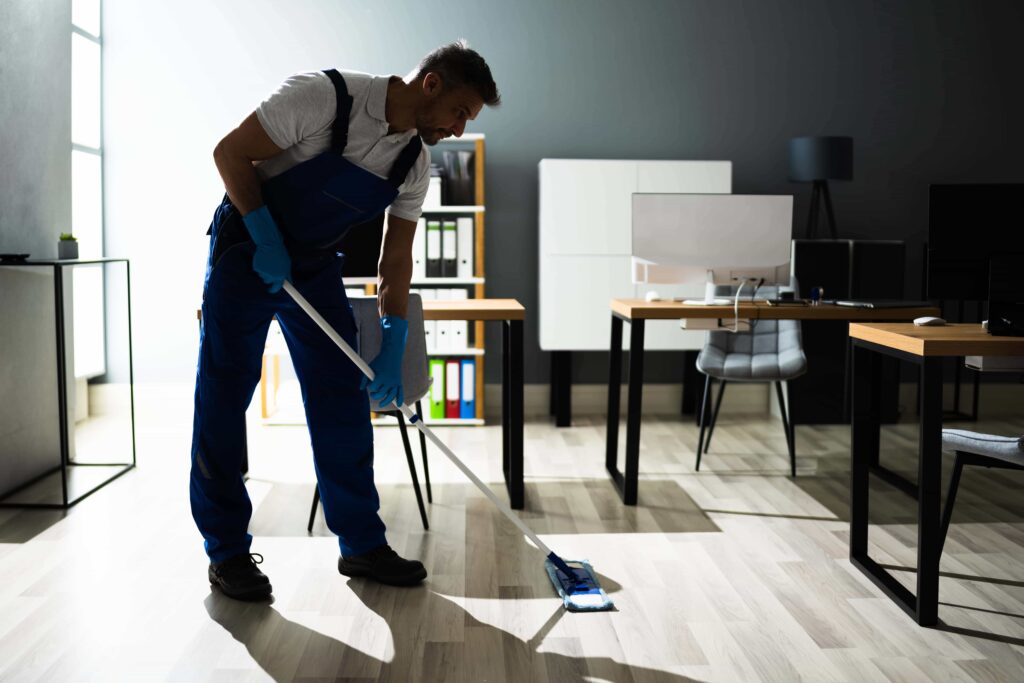In today’s fast-paced world, advancements in technology have revolutionized almost every aspect of our lives. From communication to transportation, technology has played a crucial role in making our daily tasks more efficient and convenient. The cleaning industry is no exception. With the introduction of new and innovative technologies, the cleaning industry has undergone a significant transformation, paving the way for a cleaner and healthier future. In this blog post, we will explore how forward-thinking innovations are revolutionizing the cleaning industry and shaping its future.
Embracing Technological Advancements for Enhanced Cleaning Solutions
Gone are the days when cleaning was considered a labor-intensive and time-consuming task. With the advent of technology, cleaning processes have become more streamlined and efficient. Today, cleaning companies are investing in state-of-the-art equipment and tools that not only save time but also provide superior results. For instance, high-pressure steam cleaners use hot water vapor to remove dirt and grime from surfaces, eliminating the need for harsh chemicals. This not only makes the cleaning process safer for the environment but also for the individuals performing the task.
Automated Cleaning Systems: A Path to Improved Productivity
One of the most significant advancements in the cleaning industry is the introduction of automated cleaning systems. These systems use sensors and artificial intelligence (AI) to navigate through a space and perform cleaning tasks efficiently. They can detect and avoid obstacles, map out the area, and even learn and adapt to their surroundings. This not only saves time and effort but also reduces the risk of human error. Additionally, these systems can operate 24/7, ensuring that spaces are always clean and well-maintained.
Benefits of Automated Cleaning Systems:
- Increased productivity: With automated cleaning systems, tasks can be completed at a faster pace, allowing for more work to be done in less time.
- Cost-effective: While the initial investment may be higher, automated cleaning systems can save money in the long run by reducing labor costs and minimizing the need for frequent repairs.
- Improved safety: By eliminating the need for human intervention, automated cleaning systems reduce the risk of accidents and injuries in the workplace.
Smart Cleaning Devices: Enhancing Cleaning Processes with IoT Integration
The Internet of Things (IoT) has opened up a world of possibilities for the cleaning industry. With the integration of sensors and connectivity, cleaning devices can now collect and analyze data to improve their performance. For instance, smart vacuums can map out a space and identify areas that require more attention, ensuring a thorough clean. They can also detect when they are low on battery and automatically return to their charging station, eliminating the need for manual monitoring.
Advantages of Smart Cleaning Devices:
- Customized cleaning solutions: With the ability to collect and analyze data, smart cleaning devices can provide customized cleaning solutions based on the specific needs of a space.
- Remote monitoring: Through IoT integration, cleaning professionals can remotely monitor the performance of these devices, making it easier to manage multiple spaces.
- Energy efficiency: By using sensors to detect occupancy and adjust cleaning schedules accordingly, smart cleaning devices can help conserve energy and reduce utility costs.
Sustainable Cleaning Methods: Eco-Friendly Approaches for a Greener Future
With growing concerns about climate change and environmental sustainability, the cleaning industry is also shifting towards more eco-friendly practices. This not only benefits the environment but also promotes the health and well-being of individuals. Sustainable cleaning methods involve the use of environmentally friendly products and techniques that minimize the impact on the planet.
Green Cleaning Products: A Safer and Healthier Alternative
Traditional cleaning products often contain harsh chemicals that can be harmful to both humans and the environment. Green cleaning products, on the other hand, use natural and biodegradable ingredients that are safer for use. These products are free from toxic chemicals, making them a healthier option for cleaning professionals and building occupants. They also reduce the risk of air and water pollution, contributing to a cleaner and greener future.
Benefits of Green Cleaning Products:
- Safer for individuals: Green cleaning products are free from harmful chemicals, reducing the risk of health issues such as allergies and respiratory problems.
- Environmentally friendly: By using natural and biodegradable ingredients, these products do not contribute to air and water pollution, promoting a healthier planet.
- Cost-effective: While green cleaning products may have a higher upfront cost, they can save money in the long run by reducing the need for frequent replacements and repairs caused by harsh chemicals.
Nanotechnology in Cleaning: Exploring Breakthrough Materials for Superior Results
Nanotechnology is another area that has shown great potential in revolutionizing the cleaning industry. This technology involves manipulating matter at the nanoscale (one billionth of a meter) to create materials with enhanced properties. In cleaning, nanotechnology has been used to develop self-cleaning surfaces, anti-bacterial coatings, and even stain-resistant fabrics. These materials not only make cleaning easier but also provide superior results, making them a valuable addition to the industry.
Advantages of Nanotechnology in Cleaning:
- Increased efficiency: With self-cleaning surfaces and anti-bacterial coatings, cleaning tasks can be completed more quickly and effectively.
- Longer-lasting results: The use of nanotechnology in cleaning materials ensures longer-lasting results, reducing the need for frequent cleaning.
- Improved hygiene: Anti-bacterial coatings can help prevent the spread of germs and bacteria, promoting a healthier environment.
Leveraging Data Analytics for Smarter Cleaning Decisions
Data analytics is a powerful tool that has been widely adopted in various industries, including cleaning. By collecting and analyzing data, cleaning companies can make informed decisions and improve their processes. For instance, data on foot traffic in a space can help determine the frequency and intensity of cleaning required. This not only saves time and resources but also ensures that spaces are always clean and well-maintained.
Predictive Maintenance: Minimizing Downtime and Costs
In addition to improving cleaning processes, data analytics can also be used for predictive maintenance. By monitoring the performance of equipment and identifying potential issues before they occur, cleaning companies can minimize downtime and reduce repair costs. This not only ensures that tasks are completed on time but also saves money in the long run.
Benefits of Data Analytics in Cleaning:
- Improved efficiency: By analyzing data, cleaning professionals can identify areas that require more attention and adjust their cleaning schedules accordingly, ensuring a thorough clean.
- Cost savings: Predictive maintenance can save money by reducing the need for frequent repairs and minimizing downtime.
- Better decision-making: With access to data, cleaning companies can make informed decisions about their processes and strategies, leading to improved results.
Training and Education: Empowering Cleaning Professionals with Knowledge and Skills
As technology continues to advance, it is essential for cleaning professionals to stay updated and equipped with the necessary knowledge and skills. Training and education play a crucial role in empowering cleaning professionals and preparing them for the future of the industry. From learning how to operate automated cleaning systems to understanding the importance of sustainable cleaning practices, training and education can help cleaning professionals stay ahead of the curve.
Upskilling and Reskilling: Adapting to Changing Technologies
With the introduction of new technologies, the skills required in the cleaning industry are also evolving. It is crucial for cleaning professionals to upskill and reskill to adapt to these changes and remain relevant in the industry. For instance, individuals who have been performing manual cleaning tasks may need to learn how to operate automated cleaning systems. This not only benefits the individual but also improves the overall efficiency of the cleaning process.
Advantages of Training and Education in the Cleaning Industry:
- Improved job satisfaction: By providing training and education opportunities, cleaning companies can show their employees that they are valued and invested in their growth.
- Enhanced performance: With the necessary knowledge and skills, cleaning professionals can perform their tasks more efficiently, leading to improved results.
- Future-proofing the industry: By upskilling and reskilling, the cleaning industry can adapt to changing technologies and remain competitive in the market.
Industry Collaboration: Fostering Innovation and Driving Progress
The cleaning industry is not just about individual companies competing with each other. It is a collective effort towards creating a cleaner and healthier environment for all. Collaboration between different players in the industry, such as cleaning companies, manufacturers, and technology providers, can foster innovation and drive progress. By working together, these stakeholders can identify challenges and find solutions that benefit the industry as a whole.
Open Innovation: Sharing Knowledge and Ideas for Mutual Growth
Open innovation involves sharing knowledge and ideas between different organizations to drive innovation and growth. In the cleaning industry, this can involve collaboration between cleaning companies and technology providers to develop new and improved cleaning solutions. By leveraging each other’s expertise and resources, these collaborations can lead to breakthrough innovations that benefit the entire industry.
Benefits of Industry Collaboration in the Cleaning Industry:
- Increased efficiency: By working together, different players in the industry can identify and address inefficiencies, leading to improved processes and results.
- Faster progress: Collaboration can speed up the development of new technologies and solutions, driving progress in the industry.
- Mutual growth: By sharing knowledge and resources, different organizations can grow and thrive together, leading to a stronger and more innovative industry.
Conclusion
The cleaning industry has come a long way from traditional manual cleaning methods. With the introduction of new and innovative technologies, the industry has undergone a significant transformation, paving the way for a cleaner and healthier future. From automated cleaning systems to sustainable cleaning methods, these forward-thinking innovations have revolutionized the industry and are shaping its future. By embracing these advancements and investing in training and education, the cleaning industry can continue to evolve and provide efficient and effective cleaning solutions for years to come. Collaboration between different players in the industry is also crucial in driving progress and fostering innovation. As we move towards a more technologically advanced world, it is essential for the cleaning industry to stay updated and embrace these innovations to create a cleaner and healthier environment for all.



